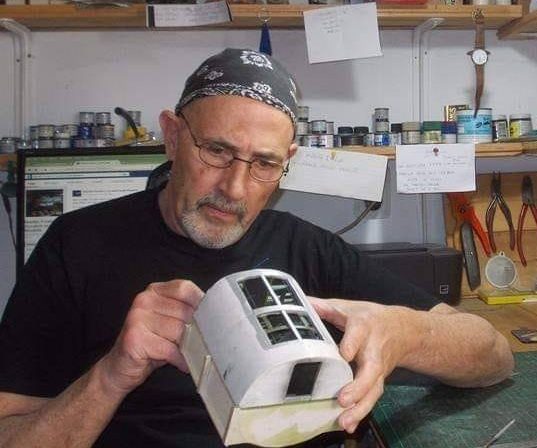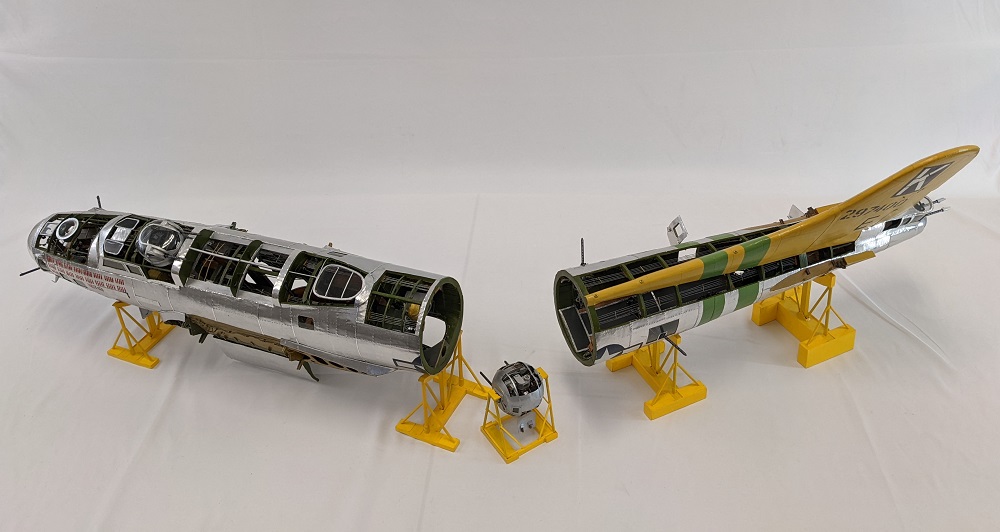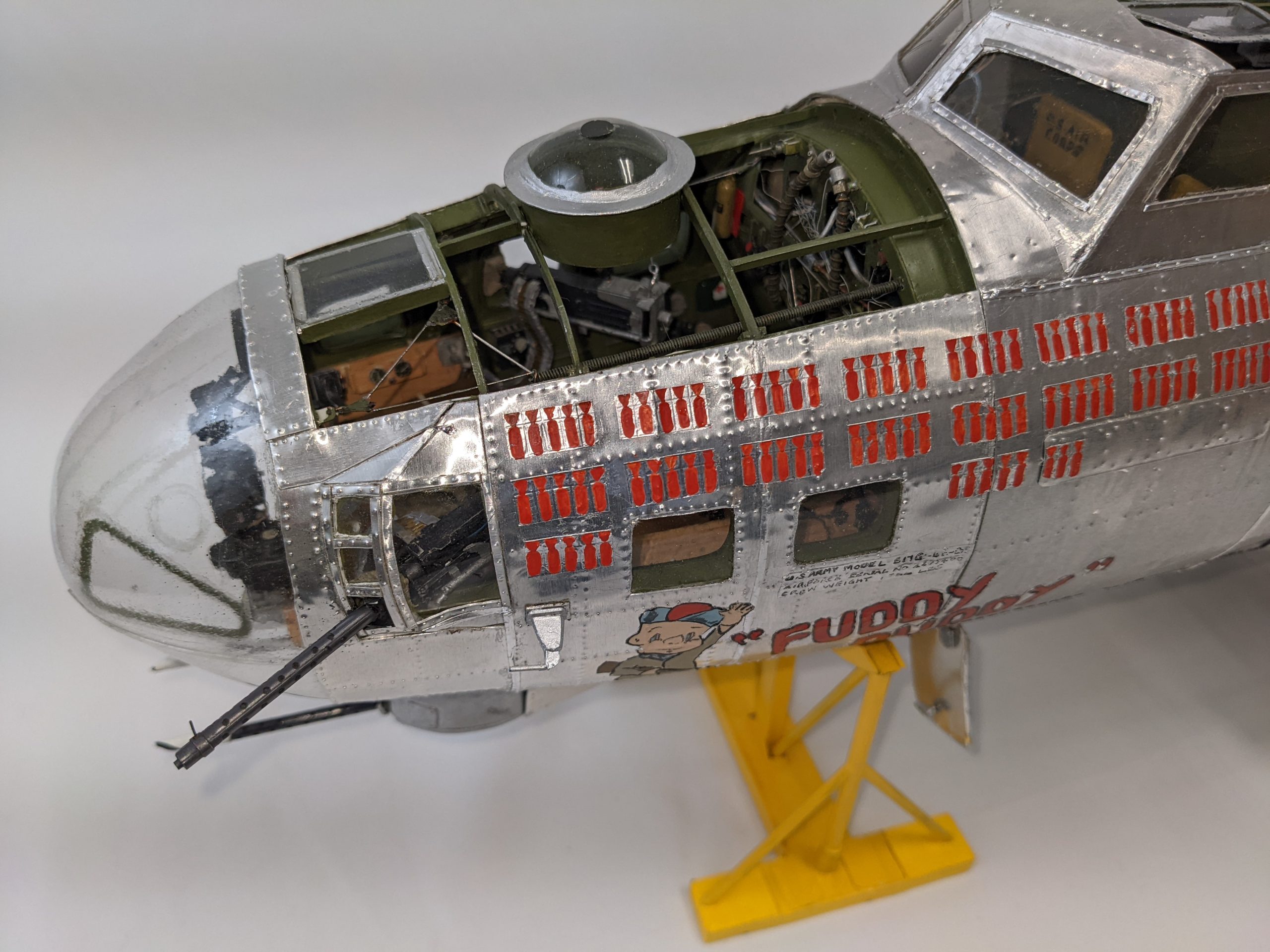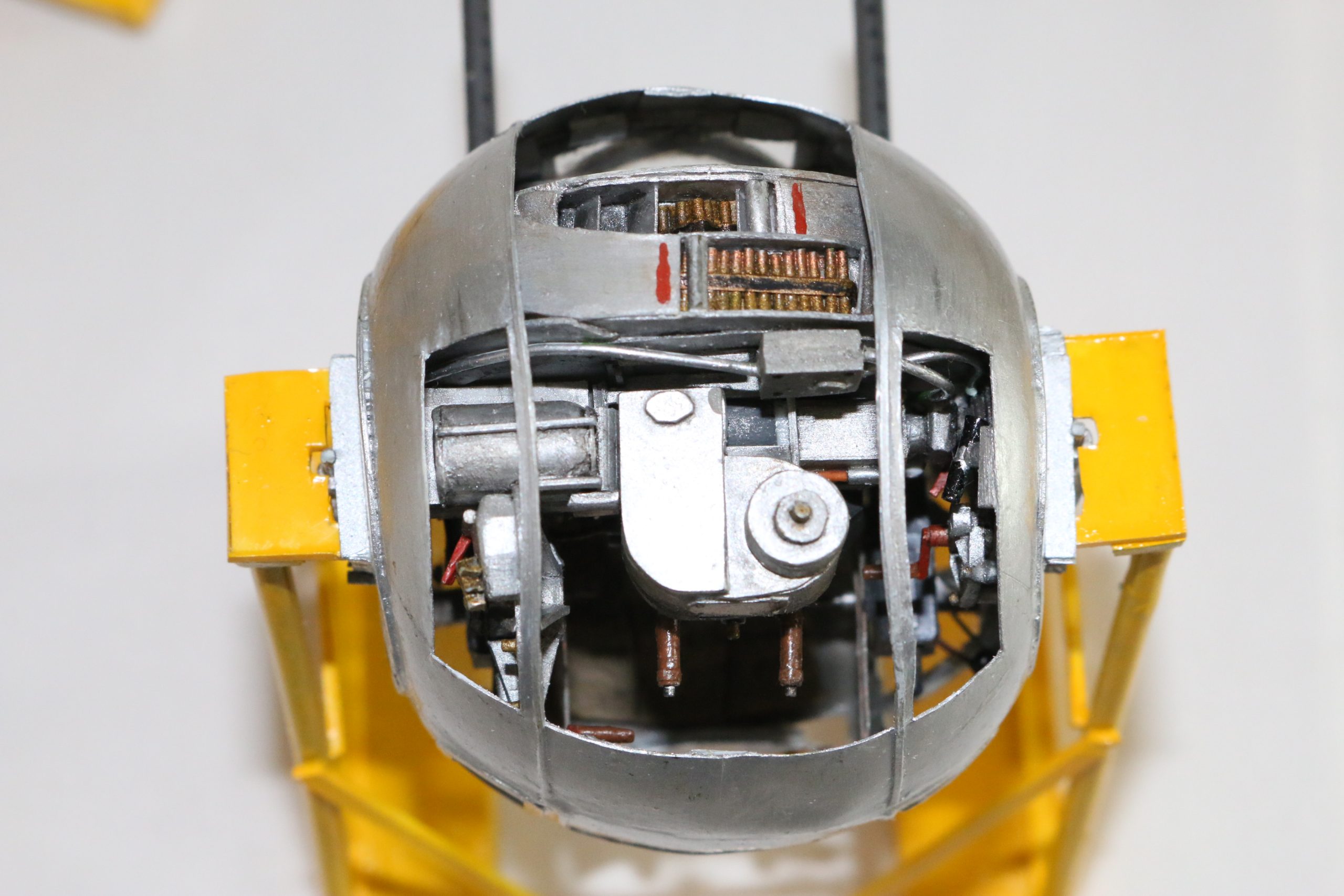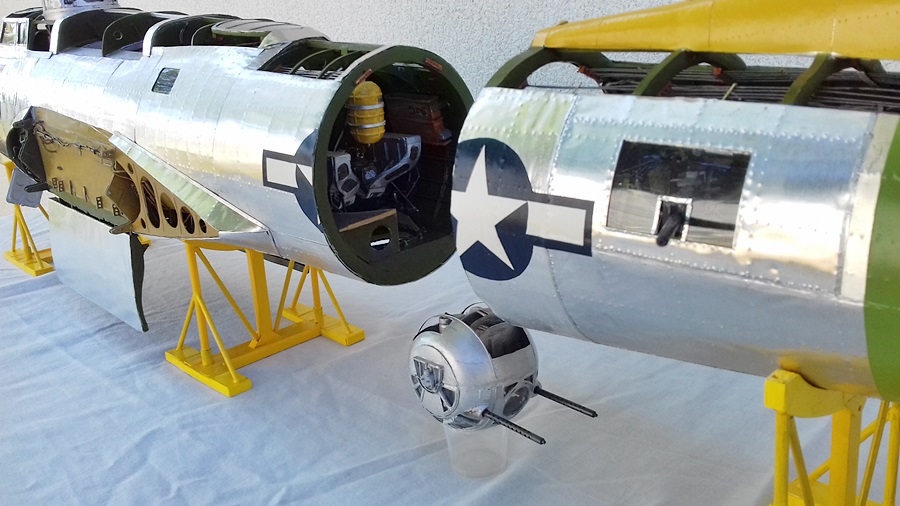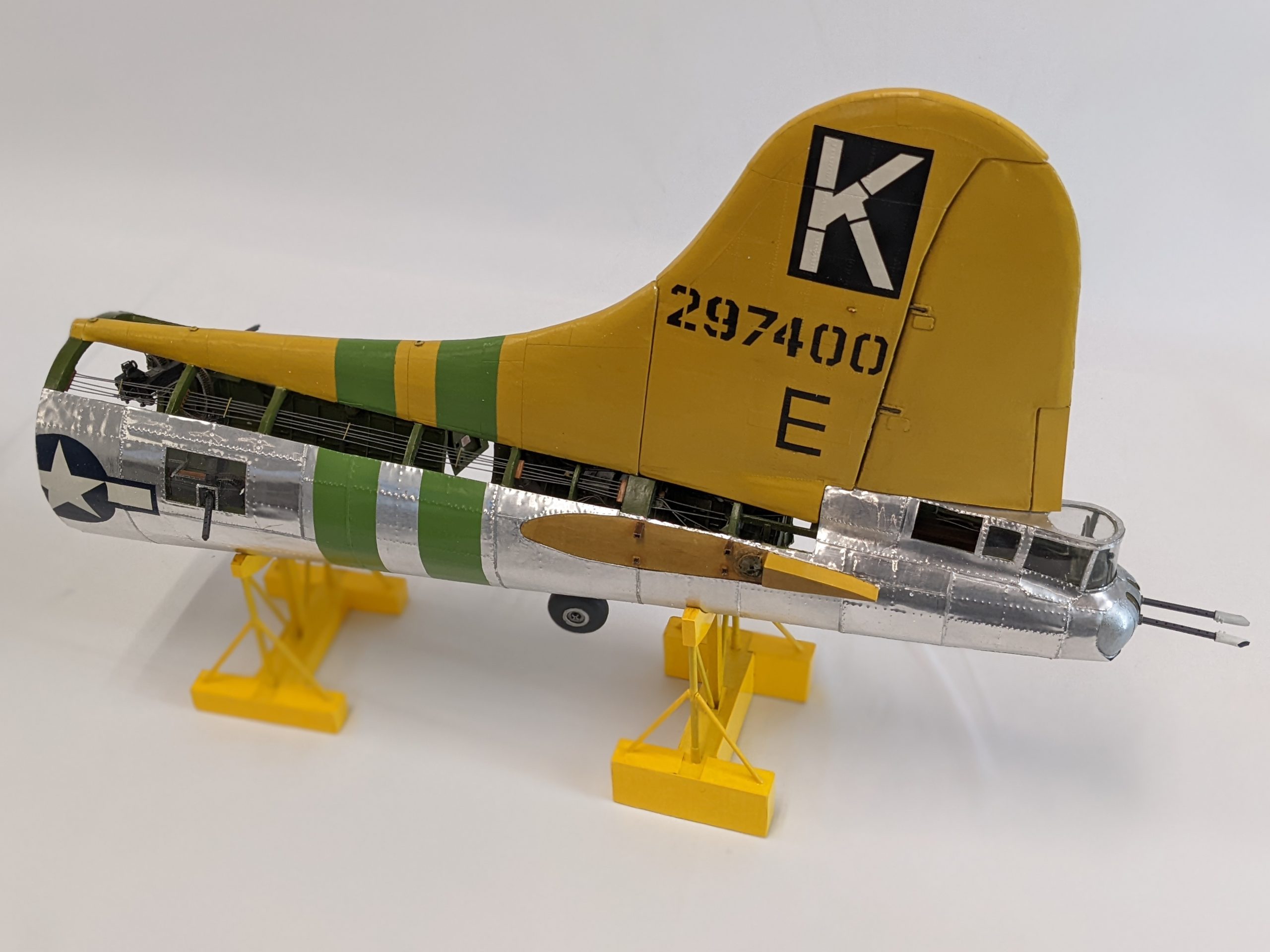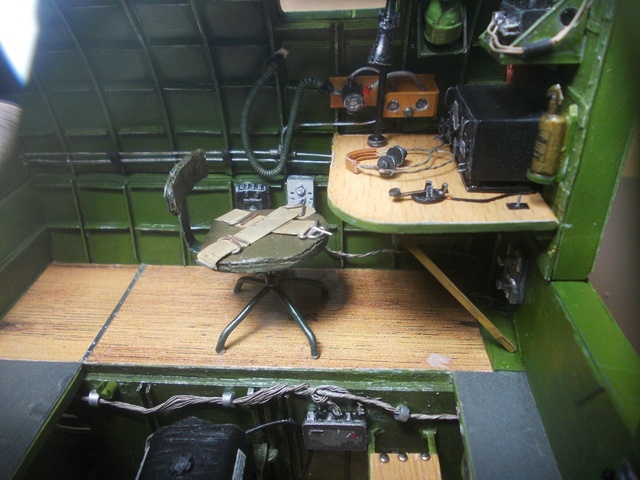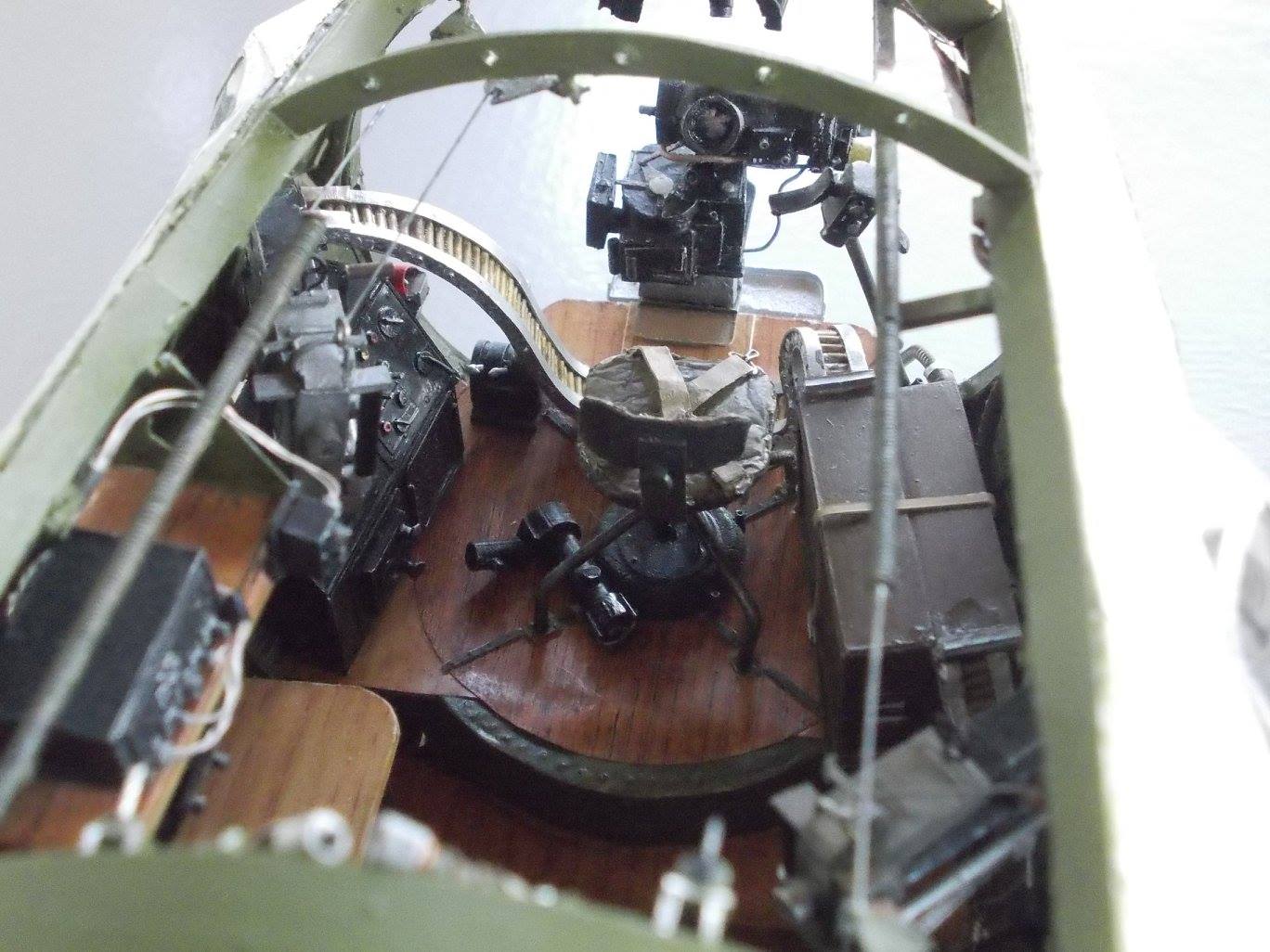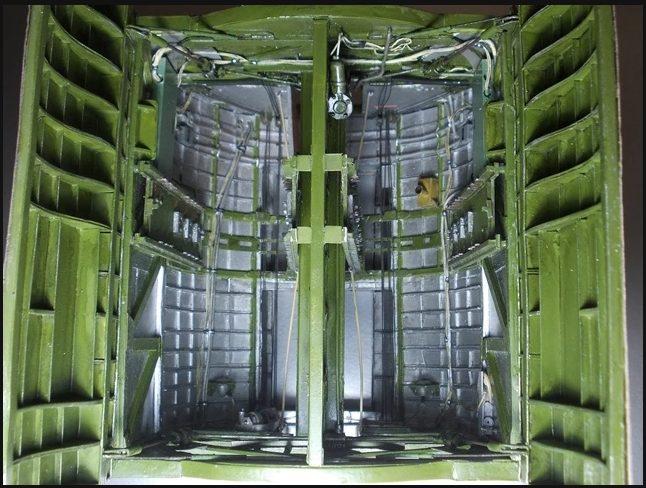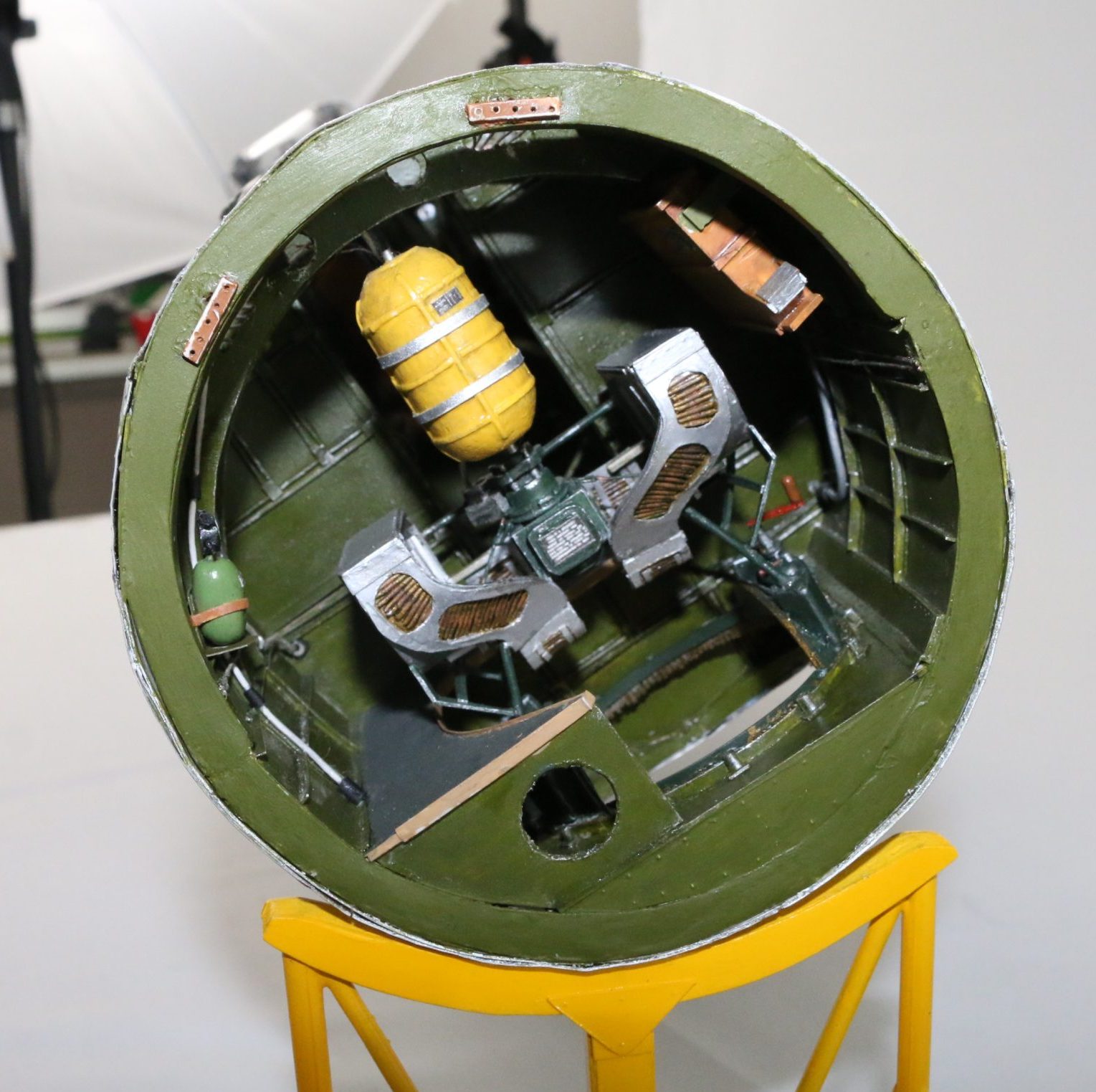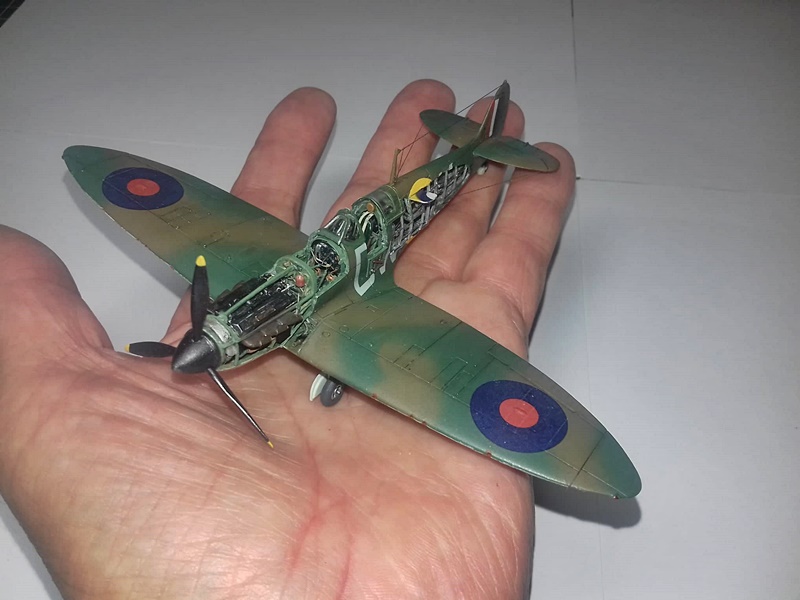A Lifetime of Model Making Leads to Fantastic Scratch-Built Airplanes
Martin Foster at work on one of his scale model airplanes. Martin’s impressive 1/20 scale B-17G fuselage is now on display at the Craftsmanship Museum in Carlsbad, CA.
Introduction
Martin Foster of Eastbourne, UK has been a lifelong model maker since early childhood. Over time he started to add scratch-built pieces to his model kits, looking for new ways to challenge himself. Eventually, he began building entire models from scratch, and the results are something to behold. Martin is now a professional model maker, having built many custom models for museums and private collections. Of these, one of his most impressive projects is a 1/20 scale B-17G “Fuddy Duddy” fuselage, which was replicated down to the smallest details. Mr. Foster has been kind enough to donate the B-17G model to the Miniature Engineering Craftsmanship Museum in Carlsbad, CA, where it is now on display. This intricate model is a shining example of Martin Foster’s dedication to fine craftsmanship and exceptional model engineering.
Getting An Early Start With Model Making
When Martin was just eight years old, his parents took him to the local funfair in his hometown of Newbury, UK. He specifically recalled taking a ride on the ghost train. While many of the children his age were terrified of riding around in the dark, Martin was fascinated with the entire experience. He immediately rushed home to build a replica of the ride out of a cardboard box. This would turn out to be Martin’s first model, but it was far from his last.
In short time, Martin developed a lifelong passion for making models of just about anything that interested him from the real world. Although, Martin is happy to admit that he has moved on from cardboard boxes to building display aircraft models. Regardless of whatever twists and turns life had in store for him, Martin noted that his affinity for model making has been a constant.
A closer look at the nose section of Martin’s 1/20 scale B-17G fuselage. Martin built this model without the aid of any detailed plans. He scratch-built the fuselage by eye, mainly using a trove of reference photos to get the details just right.
Now, like many children his age, Martin started out by building different model kits. After a few years he progressed to adding scratch-built components to enhance the models. As the years went by, Martin felt that he was capable of finally attempting a full scratch-built model.
His first attempt was to build a 1/48 scale YAK-3 out of balsa wood. Reflecting on that first scratch-built aircraft, Martin said, “It was so satisfying for me to achieve this that it put me on my present path.” It’s safe to say that Martin had developed the scratch-build itch.
A close-up of the 1/20 scale ball turret for the B-17G model. Martin noted that the ball turret was a particularly difficult portion to build.
Early Retirement Gives Way to More Modeling
Later in life, Martin was able to retire early to a small village in Bulgaria where he had his own workshop. This was a wonderful opportunity for him to spend more time indulging his passion and honing his modeling skills. Being in Bulgaria, Martin noted that he would have had to travel hundreds of miles to find the nearest model shop. As such, he focused his mind on total scratch-building. When it comes to the building process, Martin considers himself an “old school modeler.”
He noted, “The materials that I use to build my models are mainly balsa wood, plastic sheeting, electrical wire, cardboard, and anything I see lying around that seems to fit the bill! My method of building has always been that I use basic scaled plans for the fuselages, and try to replicate what I see from photographs for all the interior and other parts. This means that for each project I stare at thousands of photographs of the subject before getting to work with my MK1 eyeball!”
The 1/20 scale B-17G cockpit is totally outfitted. Everything from the control panels to the seat belts were scratch-built by Martin. Even the seat cushions are labeled accurately.
Making the B-17G “Fuddy Duddy”
Now, Martin has always had a passion for the B-17 Flying Fortress, so in 2011 he decided to try to scratch-build one. Initially, Martin just wanted to model the front section of the B-17G “Fuddy Duddy,” with the goal of showing as much interior detail as possible. However, as the project went on Martin recalled, “Somehow, I knew that I wouldn’t stop there, and so I continued building the rest of the fuselage. Ten years down the line I have finally completed it!”
Notably, the model B-17G fuselage has several cutaway sections. In fact, Martin built each section with most of the top of the fuselage open to expose the detail of the interior. This was the most important part of the project for Martin from the very start. He even chose the scale of 1/20 so that he could include as much detail as possible. In keeping with this goal, he also left off the wing sections so that viewers can get an even fuller perspective of the interior.
This photo shows the radio room inside of Martin’s small B-17G. In a covered model, these elements would likely be left unmade. That’s not the case with Martin’s super-detailed Flying Fortress.
Martin built this impressive model in the same manner as his other scale planes, without the use of any CAD programs. He knows how to use these programs, but Martin wanted to challenge himself so that the models would be entirely self-built. He collected thousands of photographs and information from the internet, and scaled all the parts by eyesight from photo to the model. The fuselage itself was constructed from balsa wood.
Martin used the stringers and former method to construct the airplane. He then skinned the fuselage with aluminum tape. The finished model has attracted quite a bit of interest since Martin first began building the nose section. Over 3,000 people have followed the build process on Facebook, and Martin’s B-17G was also featured in the January 2022 issue of Flypast Magazine.
Looking down at the bombardier’s position from the top of the fuselage. The amount of tiny scratch-built elements included in this model is staggering.
While the completed model is truly a sight to behold, it took a lot of patience and skill to construct. Even so, Martin reflected that, “In spite of sleepless nights and rebuilding some parts over and over again, my B-17G has been a labour of love. I am so pleased that it has found its perfect home in the museum.”
We are equally pleased that Martin has donated such an exceptional piece of model engineering for display at the Craftsmanship Museum. Come see Mr. Foster’s super-detailed 1/20 scale B-17G “Fuddy Duddy” in person to catch all of the hidden details yourself.
Looking forward into the interior of the B-17G fuselage. The ball turret frame can be seen here, although the turret itself sits outside of the fuselage for better viewing.
What’s Next?
After the B-17G fuselage was completed and put on display, Martin wasted no time jumping into his next project. This time, however, he took a very different direction in terms of scale. Martin thought it would be a good challenge to scratch-build the interior of a 1/72 scale MK1A Spitfire. He started with a cheap kit and converted the port side into a cutaway to show the handmade interior. Martin also scratch-built the tiny Merlin engine for the scale Spitfire.
This was a massive scale-down compared to the 1/20 scale B-17G, but Martin was able to pull it off once again. Although this build only took a few months, Martin said that it was still a challenge, and he even needed to visit his optician by the end of it. Nevertheless, he thoroughly enjoyed the process, and is already back to work on his next model masterpiece.
Martin’s finished 1/72 scale Spitfire MK1A model. The airplane was converted to a cutaway on the port side to reveal all of the scratch-built interior details. This includes the tiny Merlin engine that Martin made for the Spitfire.
To keep up to date with Martin’s current projects, and to learn more about his completed models, check out his personal website or follow along on Martin’s Facebook page.
View more photos of Martin Foster’s incredibly detailed scale model aircraft.

